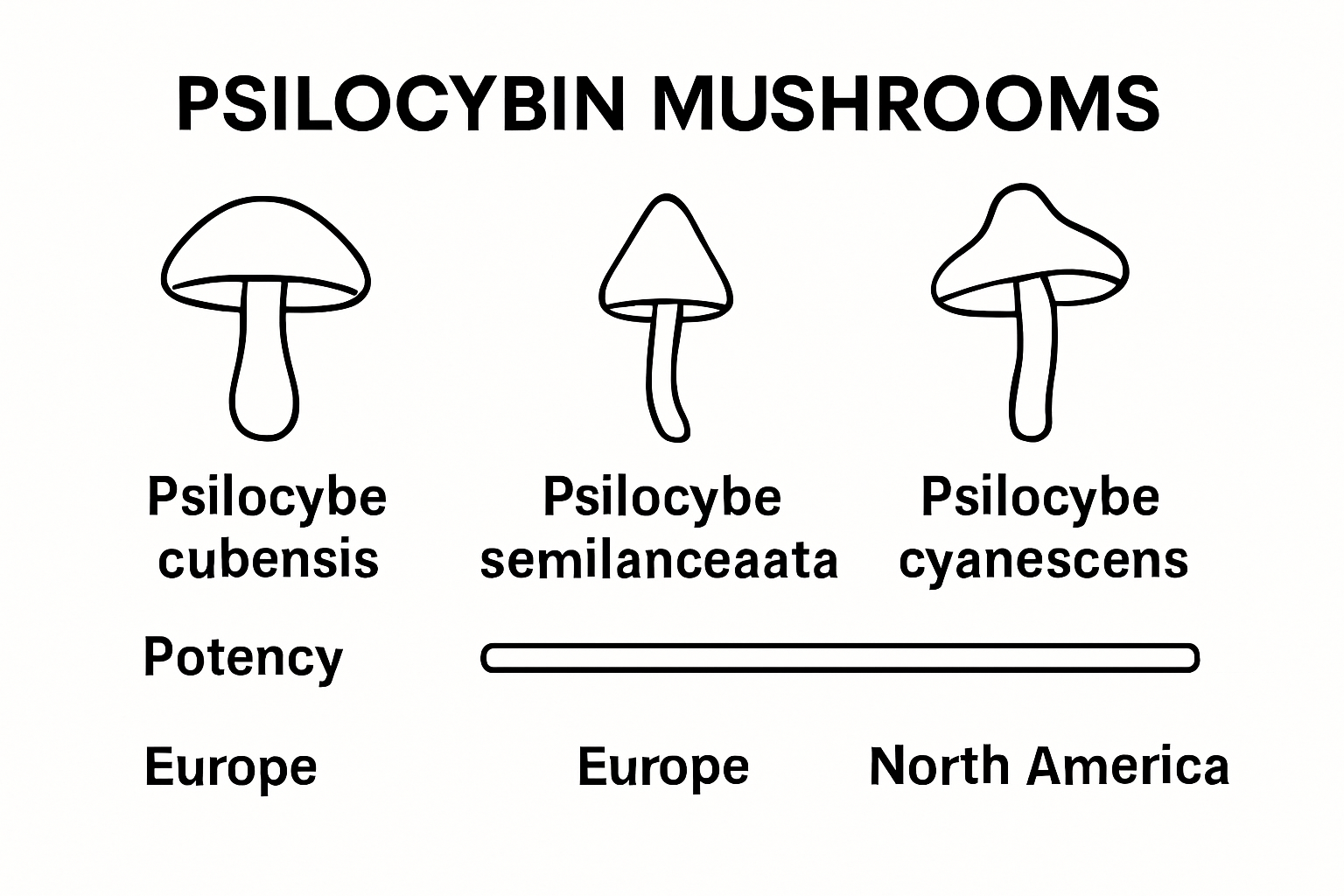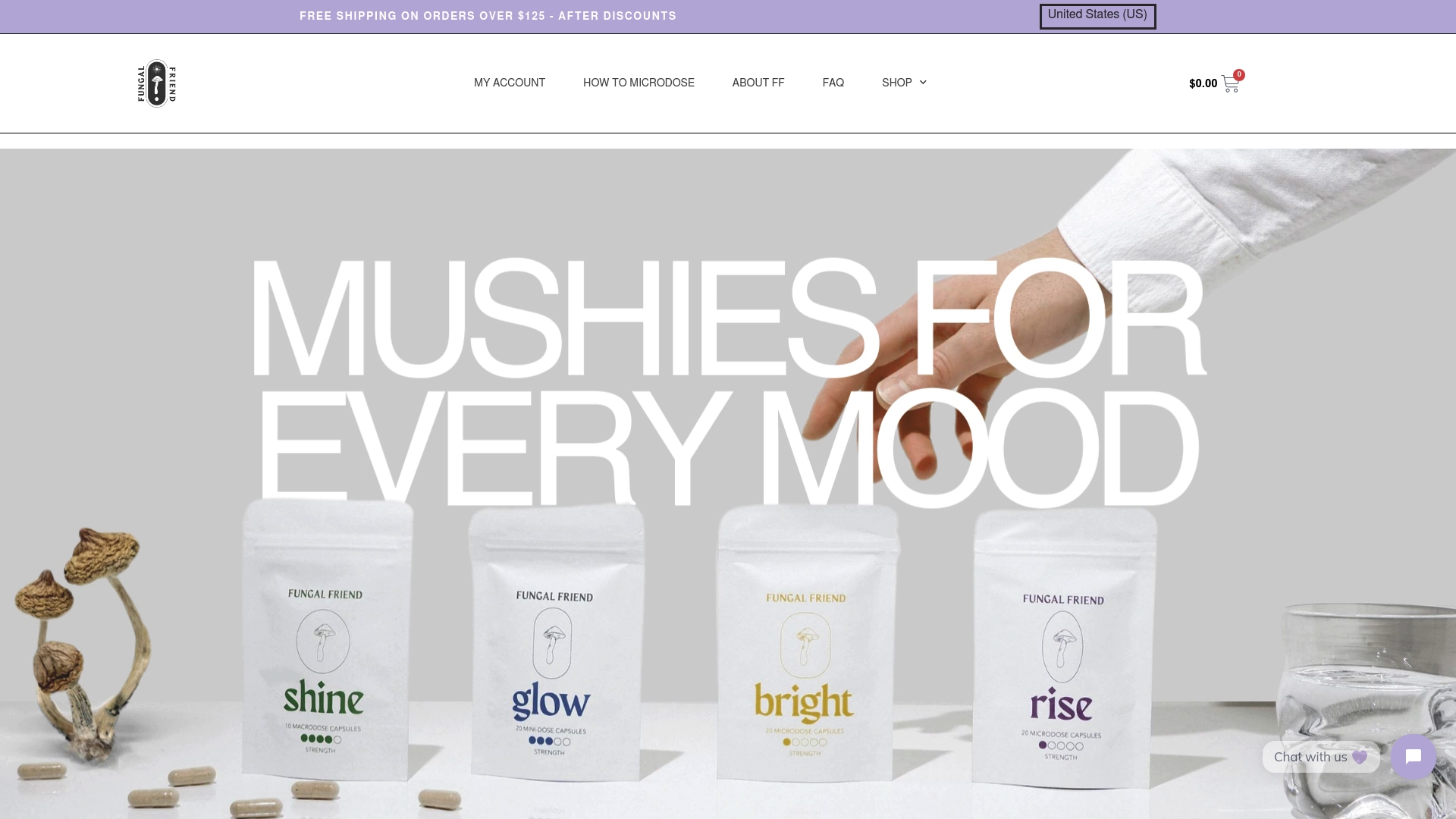Guided Mushroom Experiences Explained: Insights and Effects
People are turning to magic mushrooms for more than just psychedelic trips. Major medical journals now show that psilocybin can reduce depression symptoms in nearly 60 percent of treatment-resistant patients. And despite centuries of warnings about danger, it turns out that with the right guidance these mushrooms might actually help people heal—and not just hallucinate.
Table of Contents
- Understanding Magic Mushrooms And Their Use In Wellness
- The Science Behind Psilocybin: How It Affects The Brain
- The Role Of Guided Experiences In Arising Benefits
- Exploring Different Types Of Mushrooms And Their Effects
- Safety Considerations And Responsible Consumption
Quick Summary
| Takeaway | Explanation |
|---|---|
| Psilocybin alters brain connectivity | Psilocybin interacts with serotonin receptors, enhancing neural communication and flexibility, leading to profound mental experiences. |
| Guided experiences enhance safety and efficacy | Professional facilitation of mushroom experiences provides crucial support, helping manage psychological challenges and maximizing therapeutic benefits. |
| Understanding mushroom species impacts experiences | Different psilocybin mushroom species have varying effects; knowing these distinctions is important for safe and intentional use. |
| Comprehensive screening is vital for safety | Individuals should assess their mental health history thoroughly before engaging with psychedelics to prevent adverse reactions. |
| Structured environments improve outcomes | Safe, comfortable settings with trusted support can mitigate risks, enhancing the overall experience of consuming magic mushrooms. |
Understanding Magic Mushrooms and Their Use in Wellness
Magic mushrooms, scientifically known as psilocybin mushrooms, represent a fascinating intersection of natural compounds and potential wellness benefits. These fungi contain psilocybin, a psychoactive substance that has captured significant scientific and therapeutic interest in recent years. Research into therapeutic applications suggests these mushrooms might offer transformative approaches to mental health treatment.
The Science Behind Psilocybin
Psilocybin works by interacting with serotonin receptors in the brain, creating unique neurological experiences that can potentially reshape thought patterns and emotional responses. When consumed, psilocybin converts to psilocin, which influences brain connectivity and neural communication. This process can lead to altered perceptions, enhanced introspection, and temporary changes in cognitive processing.
Key neurological interactions include:
- Increased neural network flexibility
- Temporary disruption of default brain networks
- Enhanced emotional processing and connectivity
Wellness Potential and Emerging Research
Recent scientific investigations have explored magic mushrooms’ potential in addressing various mental health challenges. Read more about magic mushroom terminology to gain deeper insights into this emerging field. Preliminary studies suggest promising applications for conditions like treatment-resistant depression, anxiety disorders, and potential support for personal growth and psychological healing.
Wellness applications currently under research include:
- Managing treatment-resistant depression symptoms
- Reducing anxiety in end-of-life care patients
- Supporting addiction recovery processes
- Facilitating breakthrough therapeutic experiences
While research continues, magic mushrooms represent a complex and intriguing area of natural wellness exploration, offering potential pathways for mental and emotional transformation through carefully guided and supervised experiences.
The Science Behind Psilocybin: How It Affects the Brain
Psilocybin represents a complex neurochemical compound that fundamentally transforms brain functionality through intricate interactions with neural networks. Research from neuroscience studies reveals how this compound creates profound neurological experiences by disrupting standard brain communication patterns.
Neurological Interaction Mechanisms
When psilocybin enters the brain, it quickly converts to psilocin, which primarily targets serotonin 2A receptors. These receptors play a critical role in modulating perception, mood, and cognitive processing. The interaction triggers a cascade of neurological changes that temporarily restructure brain connectivity, allowing for unprecedented neural communication pathways.
Key neurological transformation processes include:
- Increased neuroplasticity
- Reduced default mode network activity
- Enhanced cross-hemisphere brain communication
- Temporary dissolution of established neural patterns
Neurochemical and Perceptual Shifts
Explore deeper insights into psilocybin’s neurological impact to understand its remarkable brain interactions. Psilocybin induces a state of heightened neural flexibility, where brain regions that typically operate independently begin communicating more dynamically. This process can lead to profound perceptual experiences, including altered sensory processing, enhanced emotional awareness, and temporary restructuring of cognitive frameworks.
Brain regions most significantly impacted include:
- Prefrontal cortex (decision making and personality expression)
- Default mode network (self-referential thinking)
- Limbic system (emotional processing)
- Sensory integration centers
These neurological interactions explain why psilocybin experiences can feel deeply transformative, offering unique opportunities for psychological exploration and potential therapeutic interventions.
The Role of Guided Experiences in Arising Benefits
Guided mushroom experiences represent a structured approach to exploring psilocybin’s potential benefits, emphasizing safety, intentionality, and therapeutic support. Clinical research from JAMA Psychiatry highlights the critical importance of professional supervision in maximizing positive psychological outcomes.
The Importance of Professional Guidance
Professional guidance transforms a potentially overwhelming psychedelic experience into a controlled, meaningful therapeutic intervention. Trained facilitators create a safe environment that helps participants navigate complex psychological terrain, managing potential challenges and supporting emotional processing.
These guides are typically mental health professionals or experienced therapists trained in psychedelic support techniques.
Key elements of professional guidance include:
- Comprehensive pre-experience screening
- Creating a safe, comfortable physical environment
- Providing emotional support during the experience
- Facilitating integration and reflection afterward
- Managing potential psychological challenges
Psychological and Therapeutic Frameworks
Learn more about therapeutic uses of psilocybin to understand the nuanced approach of guided experiences. Guided sessions typically follow structured protocols designed to maximize potential therapeutic benefits. These frameworks help participants explore personal insights, process emotional blockages, and potentially address deep-seated psychological patterns.
Primary therapeutic objectives of guided experiences include:
- Promoting emotional healing
- Reducing symptoms of anxiety and depression
- Enhancing personal self-understanding
- Facilitating breakthrough psychological insights
- Supporting trauma recovery processes
By providing a carefully managed container for exploration, guided experiences offer a profound opportunity for personal transformation and psychological growth, bridging traditional therapeutic approaches with innovative consciousness exploration techniques.
Exploring Different Types of Mushrooms and Their Effects
The world of psychoactive mushrooms encompasses a diverse range of species, each with unique chemical compositions and potential experiences. Research from the United Nations Office on Drugs and Crime highlights the complexity of these fascinating fungi and their varied pharmacological profiles.
Psilocybin-Containing Mushroom Species
Psilocybe cubensis remains the most widely recognized and studied psychoactive mushroom species. This species is renowned for its relatively consistent potency and widespread availability. Other notable psilocybin-containing mushrooms include Psilocybe semilanceata (liberty caps) and Psilocybe cyanescens, each presenting slightly different chemical concentrations and potential experiential characteristics.

Key characteristics of prominent psilocybin mushroom species include:
- Variations in psilocybin concentration
- Geographical distribution differences
- Unique growth environments
- Subtle variations in psychoactive effects
Comparative Mushroom Effects and Considerations
Explore our comprehensive guide on microdosing mushrooms to understand the nuanced differences between species. While many mushrooms share similar chemical structures, their effects can vary significantly based on factors like dosage, individual physiology, and preparation method. Some species produce more intense visual experiences, while others might emphasize emotional or introspective journeys.
Important factors influencing mushroom experiences include:
- Individual metabolic differences
- Dosage and consumption method
- Personal psychological state
- Environmental and setting conditions
- Mushroom species and specific strain characteristics
Understanding these distinctions is crucial for safe and intentional exploration, ensuring participants can approach their experiences with informed expectations and appropriate preparation.
Below is a table comparing several prominent psilocybin-containing mushroom species and their key characteristics to help readers understand their differences and unique properties.
| Mushroom Species | Psilocybin Content | Common Name | Geographical Distribution | Notable Characteristics |
|---|---|---|---|---|
| Psilocybe cubensis | Moderate to high | Golden Teacher | Worldwide (tropical/subtropical) | Most widely cultivated; consistent potency |
| Psilocybe semilanceata | Moderate | Liberty Cap | Europe, North America | Known for potent effects; grows in grassland |
| Psilocybe cyanescens | High | Wavy Cap | Pacific Northwest, UK | Very potent; likes wood chips/mulch |
| Psilocybe azurescens | Very high | Flying Saucer | West Coast USA | Most potent wild species |
| Psilocybe mexicana | Moderate | Teonanácatl | Central America | Historical ceremonial use |
Safety Considerations and Responsible Consumption
Responsible mushroom consumption represents a critical approach to exploring psychedelic experiences, prioritizing personal safety and psychological well-being. Clinical research on psychedelic use emphasizes the importance of comprehensive psychological screening and informed decision making.
Psychological and Physical Screening
Comprehensive pre-experience screening is fundamental to ensuring safe psychedelic exploration. Individuals with personal or family histories of psychotic disorders, bipolar conditions, or schizophrenia should exercise extreme caution. Mental health professionals recommend thorough self-assessment and potentially consulting healthcare providers before engaging in any psychedelic experience.
Critical screening considerations include:
- Personal mental health history
- Family psychiatric background
- Current psychological state
- Existing medication interactions
- Potential neurological contraindications
Setting and Environment Management
Check out our essential mushroom safety guidelines to understand the nuanced approach to creating a safe psychedelic environment. The physical and emotional context of a mushroom experience profoundly impacts its potential outcomes. A controlled, comfortable setting with trusted support persons can significantly mitigate potential psychological risks.
Key environmental safety factors include:
- Choosing a calm, familiar environment
- Having a designated sober support person
- Ensuring physical safety and comfort
- Minimizing external stressors
- Preparing necessary support resources
Responsible consumption extends beyond immediate safety, encompassing holistic preparation, mindful intention setting, and a commitment to personal psychological integration and understanding.
The following table organizes critical factors for psychological and physical screening prior to consuming magic mushrooms, providing an at-a-glance view of what should be considered for safety.
| Screening Factor | Description | Why It Matters |
|---|---|---|
| Personal Mental Health | Assess personal history of mental health disorders | Prevents adverse psychological effects |
| Family Psychiatric Background | Review family history of psychotic or bipolar conditions | Identifies genetic predispositions |
| Current Psychological State | Evaluate current mood, stress, or anxiety levels | Ensures emotional preparedness |
| Medication Interactions | Check for potential interactions with current medications | Avoids dangerous drug interactions |
| Neurological Contraindications | Determine any existing neurological conditions | Prevents unwanted physiological effects |

Ready for a Transformational Mushroom Journey?
Struggling to find a safe and effective way to experience the benefits of magic mushrooms? If you are curious about guided mushroom experiences, you probably want expert support, precise products, and reliable education. The article covers the importance of safety, dosing, and proper guidance—key challenges for anyone exploring psilocybin for wellness or deeper self-understanding. At Fungal Friend, you will discover products designed for clarity, focus, creativity, or those looking for a deeper therapeutic session. You will find capsules, infused teas, and chocolates, all crafted with your safety and goals in mind. If you want to dive into more details on product varieties or real guidance, our Uncategorized Archives offer even more expert insights.

Your journey matters. Take the next step now and find the right mushroom format for your own guided experience at Fungal Friend. Every order is shipped discreetly and includes support resources and educational content. Start making progress toward your goals and experience the difference today.
Frequently Asked Questions
What are guided mushroom experiences?
Guided mushroom experiences involve structured sessions led by trained professionals who help participants safely navigate their psychedelic journeys, focusing on therapeutic support and emotional processing.
How does professional guidance enhance mushroom experiences?
Professional guidance creates a safe environment and provides emotional support, helping participants manage potentially overwhelming feelings and promoting personal insights during the experience.
What should I consider before participating in a guided mushroom experience?
Prior to engaging in a guided mushroom experience, individuals should undergo psychological screening, considering their mental health history, current psychological state, and the setting in which the experience will take place.
What are the potential therapeutic benefits of guided mushroom experiences?
Guided mushroom experiences may facilitate emotional healing, reduce symptoms of anxiety and depression, enhance self-understanding, and support trauma recovery processes through intentional and structured psychedelic exploration.
